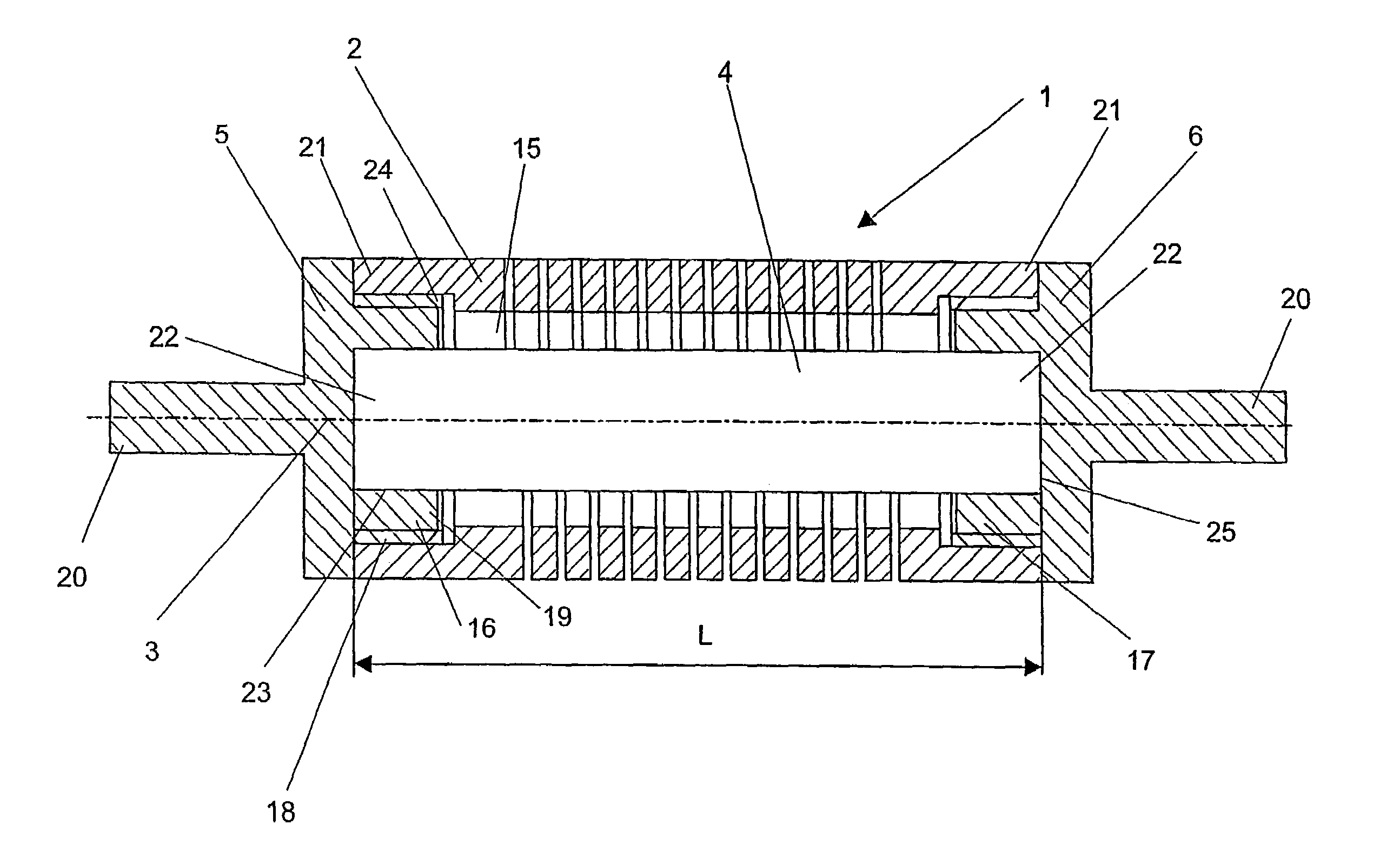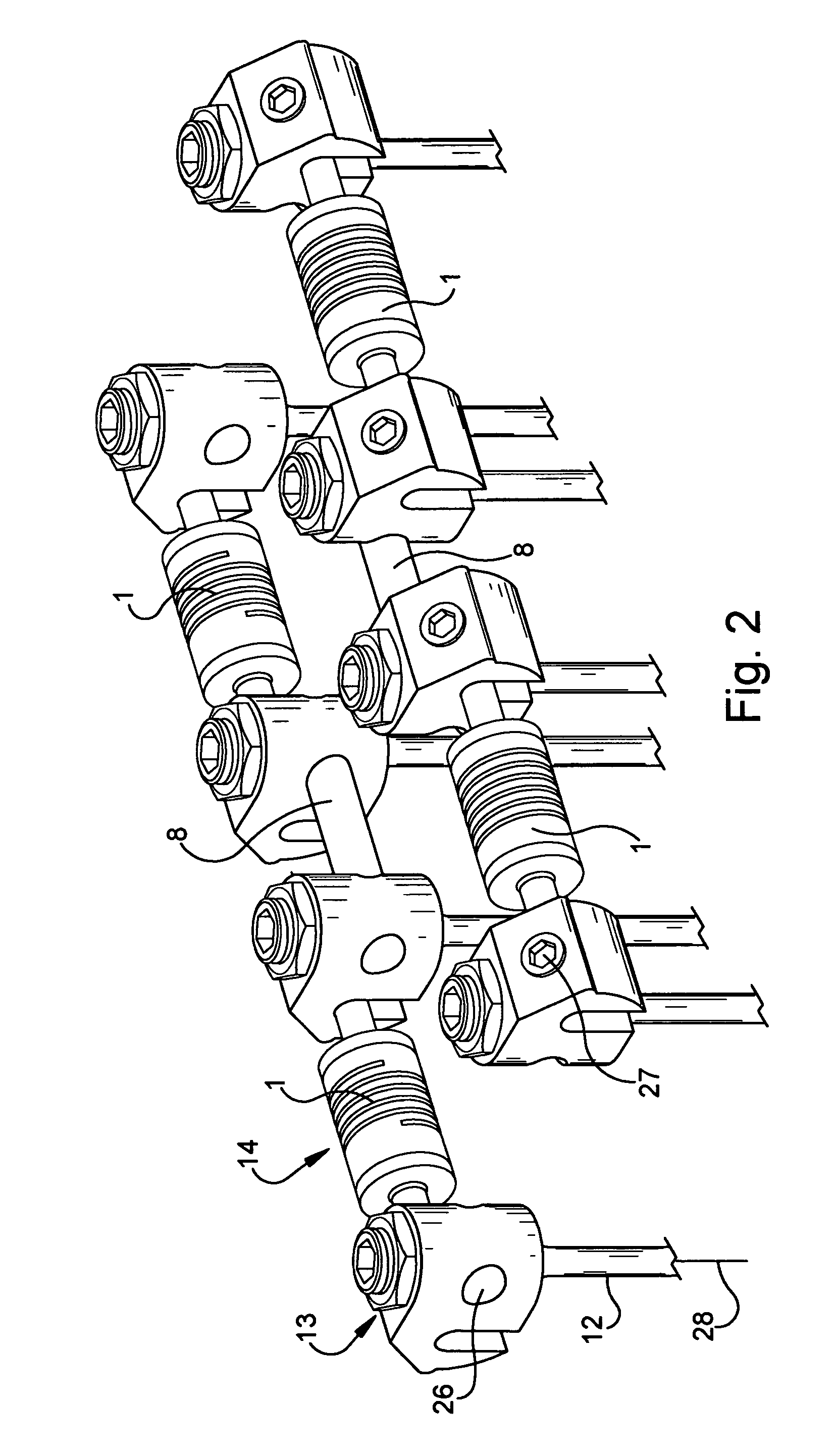Damping element
a technology of pedicle screws and components, applied in the field of pedicle screws, can solve the problems of affecting the operation, affecting the operation, and affecting the operation,
- Summary
- Abstract
- Description
- Claims
- Application Information
AI Technical Summary
Benefits of technology
Problems solved by technology
Method used
Image
Examples
Embodiment Construction
[0032]FIG. 1 shows an embodiment mode of the damping element 1 of the invention having two spring elements 2, 4 concentrically mounted with the longitudinal axis 3. The first spring element 2 is designed as a helical spring with a central cavity 15, whereas the second spring element 4 is bar-shaped and configured in said cavity 15. The end-side connectors 5, 6 also are mounted coaxially with the longitudinal axis 3 and each is fitted with a threaded segment 16, 17 with an outer thread 18, said segments being coaxial with the longitudinal axis 3 and pointing toward the spring elements 2, 4. The first spring element 2 is fitted at its axial ends 21 with inner threads 24 in the cavity 15 which match the outer threads 18, as a result of which the threaded segments of the connectors 5, 6 can be screwed into the first spring element 2. Moreover each connector 5, 6 comprises an open recess 23 configured coaxially with the longitudinal axis 3 at the inner end 19 of said connector, as a resu...
PUM
 Login to View More
Login to View More Abstract
Description
Claims
Application Information
 Login to View More
Login to View More - R&D
- Intellectual Property
- Life Sciences
- Materials
- Tech Scout
- Unparalleled Data Quality
- Higher Quality Content
- 60% Fewer Hallucinations
Browse by: Latest US Patents, China's latest patents, Technical Efficacy Thesaurus, Application Domain, Technology Topic, Popular Technical Reports.
© 2025 PatSnap. All rights reserved.Legal|Privacy policy|Modern Slavery Act Transparency Statement|Sitemap|About US| Contact US: help@patsnap.com



